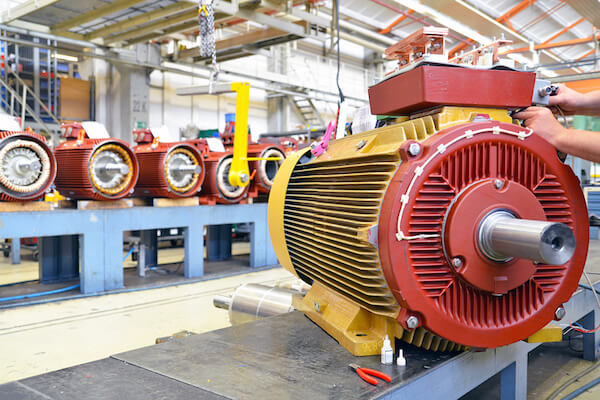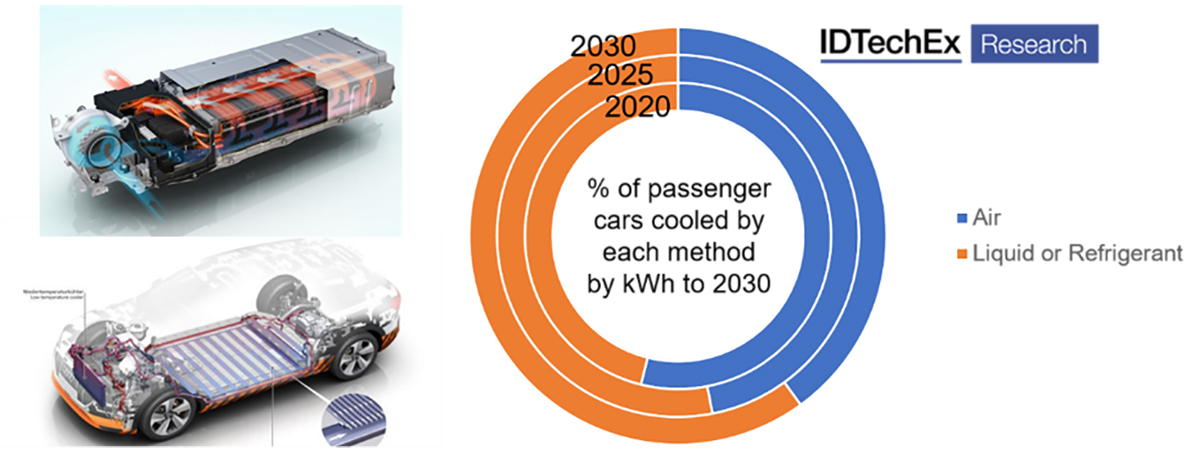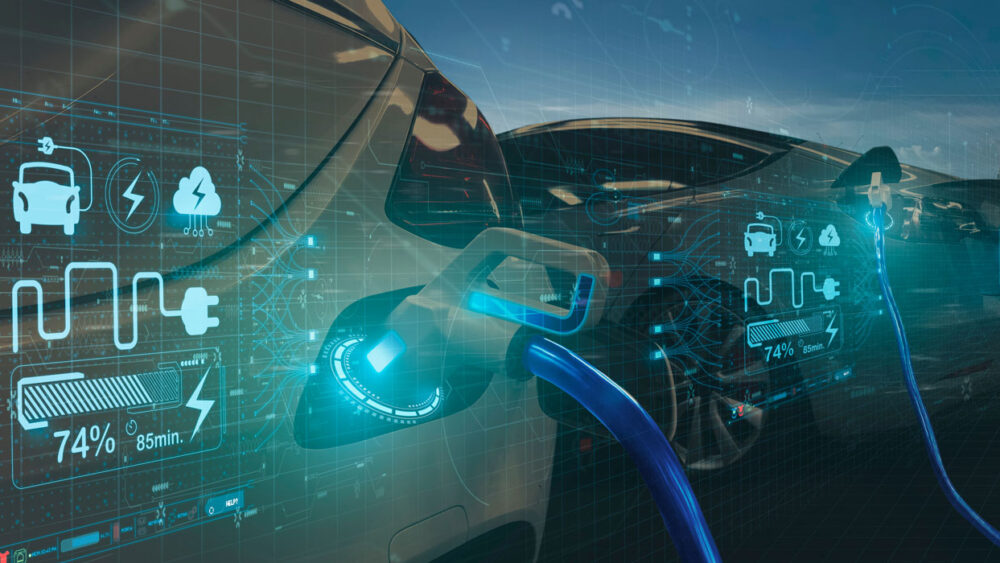Understanding the Importance of Safety Standards in Electric Vehicles
The growing concern for safety in electric vehicles has led to a surge in demand for standardized safety protocols. As the world shifts towards a more sustainable and environmentally friendly mode of transportation, the need for robust safety standards has become increasingly important. Electric vehicle and electric motor safety standards trends are evolving rapidly, with regulatory bodies and industry associations working together to establish a framework for ensuring the safety of drivers, passengers, and pedestrians.
The impact of safety standards on the adoption and development of electric vehicles cannot be overstated. A study by the National Highway Traffic Safety Administration (NHTSA) found that safety features such as airbags, anti-lock braking systems (ABS), and electronic stability control (ESC) have significantly reduced the number of fatalities and injuries on the road. Similarly, the implementation of safety standards for electric vehicles can help to mitigate the risks associated with these vehicles, such as thermal runaway and electrical shock.
Moreover, safety standards can also play a crucial role in shaping consumer confidence in electric vehicles. A survey by the International Council on Clean Transportation found that safety concerns are a major barrier to the adoption of electric vehicles. By establishing robust safety standards, manufacturers can help to alleviate these concerns and increase consumer trust in their products.
As the electric vehicle market continues to grow, it is essential that safety standards keep pace with the latest technological advancements. This includes the development of new safety features, such as advanced driver-assistance systems (ADAS) and autonomous driving systems. By incorporating these features into safety standards, manufacturers can help to ensure that electric vehicles are not only safe but also equipped with the latest technology.
In conclusion, safety standards are a critical component of the electric vehicle ecosystem. By establishing robust safety protocols, manufacturers can help to mitigate risks, increase consumer confidence, and drive the adoption of electric vehicles. As the electric vehicle market continues to evolve, it is essential that safety standards remain a top priority.
How to Identify Safe Electric Vehicles: A Guide to Certification and Compliance
When it comes to ensuring the safety of electric vehicles, certification and compliance play a crucial role. Regulatory bodies and industry associations have established various standards and guidelines to ensure that electric vehicles meet certain safety requirements. In this article, we will explore the certification process for electric vehicles and provide a guide on how to identify safe electric vehicles.
One of the most widely recognized certifications for electric vehicles is the UL (Underwriters Laboratories) certification. UL is a non-profit organization that tests and certifies products for safety and performance. To obtain UL certification, electric vehicles must meet certain safety standards, including those related to electrical safety, fire safety, and crashworthiness.
Another important certification for electric vehicles is the ECE (Economic Commission for Europe) certification. ECE is a United Nations agency that sets safety and environmental standards for vehicles. To obtain ECE certification, electric vehicles must meet certain safety standards, including those related to braking, steering, and environmental impact.
In addition to these certifications, electric vehicles must also comply with various regulations and guidelines set by government agencies and industry associations. For example, the National Highway Traffic Safety Administration (NHTSA) sets safety standards for vehicles in the United States, while the European Union has its own set of safety regulations.
So, how can you identify safe electric vehicles? Here are a few tips:
Look for certifications such as UL or ECE. These certifications indicate that the vehicle has met certain safety standards.
Check the vehicle’s safety features, such as airbags, anti-lock braking systems (ABS), and electronic stability control (ESC).
Research the vehicle’s manufacturer and their safety record. Look for manufacturers that have a reputation for producing safe vehicles.
Check the vehicle’s safety ratings, such as those provided by the NHTSA or the Insurance Institute for Highway Safety (IIHS).
By following these tips, you can help ensure that you are purchasing a safe electric vehicle. Remember, safety should always be a top priority when it comes to electric vehicles.
The Evolution of Electric Motor Safety Standards: A Look at Recent Developments
The electric vehicle industry has witnessed significant advancements in recent years, with a growing focus on safety standards. Electric motor safety standards, in particular, have undergone substantial updates and revisions. In this article, we will explore the recent developments in electric motor safety standards and their impact on the industry.
One of the key developments in electric motor safety standards is the introduction of new regulations and guidelines. For instance, the International Electrotechnical Commission (IEC) has published a new standard for electric motor safety, IEC 60364-7-722, which provides guidelines for the safe design and installation of electric motors in electric vehicles. Similarly, the National Fire Protection Association (NFPA) has updated its standard for electric vehicle safety, NFPA 855, to include new requirements for electric motor safety.
Another significant development in electric motor safety standards is the growing emphasis on thermal management. Electric motors can generate high temperatures during operation, which can lead to reduced efficiency, increased wear and tear, and even safety risks. To address this issue, manufacturers are incorporating advanced thermal management systems into their electric motors, such as cooling systems and thermal sensors.
The impact of these developments on electric vehicle manufacturers and consumers is significant. Manufacturers must now comply with the new regulations and guidelines, which can be a time-consuming and costly process. However, the benefits of improved safety standards far outweigh the costs. Consumers, on the other hand, can expect safer and more reliable electric vehicles, which can help to increase confidence in the technology.
In addition to the developments mentioned above, there are also several emerging trends in electric motor safety standards. One of the most significant trends is the growing use of advanced materials and technologies, such as high-temperature superconductors and advanced magnetic materials. These materials and technologies have the potential to significantly improve the efficiency and safety of electric motors.
Another trend is the increasing focus on cybersecurity in electric motor safety standards. As electric vehicles become more connected and reliant on software, the risk of cyber attacks and data breaches increases. To address this issue, manufacturers are incorporating advanced cybersecurity measures into their electric motors, such as encryption and secure communication protocols.
In conclusion, the evolution of electric motor safety standards is a critical aspect of the electric vehicle industry. Recent developments, such as new regulations and guidelines, thermal management systems, and advanced materials and technologies, are helping to improve the safety and reliability of electric vehicles. As the industry continues to grow and evolve, we can expect to see even more innovative solutions to the challenges of electric motor safety.
Comparing Safety Features in Popular Electric Vehicles: A Review of Tesla, Nissan, and BMW
As the electric vehicle market continues to grow, safety has become a top priority for manufacturers and consumers alike. In this article, we will compare the safety features of three popular electric vehicles: the Tesla Model 3, Nissan Leaf, and BMW i3. We will evaluate the effectiveness of these features in preventing accidents and reducing injuries.
The Tesla Model 3 is a leader in electric vehicle safety, with a 5-star overall safety rating from the National Highway Traffic Safety Administration (NHTSA). The vehicle features a range of advanced safety features, including Autopilot, a semi-autonomous driving system that helps to prevent accidents. The Model 3 also features a robust battery pack that is designed to protect occupants in the event of a crash.
The Nissan Leaf is another popular electric vehicle that has a strong safety record. The vehicle features a range of safety features, including automatic emergency braking and lane departure warning. The Leaf also has a 5-star overall safety rating from the NHTSA and has been named a Top Safety Pick+ by the Insurance Institute for Highway Safety (IIHS).
The BMW i3 is a unique electric vehicle that features a range of advanced safety features. The vehicle has a 5-star overall safety rating from the NHTSA and features a robust battery pack that is designed to protect occupants in the event of a crash. The i3 also features a range of advanced safety features, including automatic emergency braking and lane departure warning.
In terms of safety features, all three vehicles have a range of advanced features that are designed to prevent accidents and reduce injuries. However, the Tesla Model 3 stands out for its Autopilot system, which is a semi-autonomous driving system that helps to prevent accidents. The Model 3 also has a more comprehensive suite of safety features, including blind spot monitoring and lane change assist.
Overall, all three vehicles have a strong safety record and feature a range of advanced safety features. However, the Tesla Model 3 stands out for its Autopilot system and comprehensive suite of safety features. As the electric vehicle market continues to grow, safety will remain a top priority for manufacturers and consumers alike.
In the context of electric vehicle and electric motor safety standards trends, the comparison of safety features in popular electric vehicles highlights the importance of standardized safety protocols. As the industry continues to evolve, it is likely that we will see even more advanced safety features and technologies emerge. By comparing the safety features of popular electric vehicles, we can gain a better understanding of the current state of safety in the industry and what we can expect in the future.
The Role of Advanced Technologies in Enhancing Electric Vehicle Safety
As the electric vehicle industry continues to evolve, advanced technologies are playing an increasingly important role in enhancing safety. Autonomous driving systems, advanced driver-assistance systems (ADAS), and other technologies are being integrated into electric vehicles to improve safety and reduce the risk of accidents.
Autonomous driving systems, for example, use a combination of sensors, cameras, and software to enable vehicles to operate without human input. These systems have the potential to significantly improve safety by reducing the risk of human error, which is a leading cause of accidents. Autonomous driving systems can also improve safety by enabling vehicles to respond to emergency situations more quickly and effectively.
Advanced driver-assistance systems (ADAS) are another technology that is being used to enhance electric vehicle safety. ADAS systems use a combination of sensors and cameras to provide drivers with real-time information about their surroundings, including lane departure warnings, blind spot monitoring, and forward collision warnings. These systems can help to prevent accidents by alerting drivers to potential hazards and providing them with more time to react.
In addition to autonomous driving systems and ADAS, other advanced technologies are also being used to enhance electric vehicle safety. For example, some electric vehicles are equipped with advanced battery management systems that can detect potential safety issues and take corrective action to prevent accidents. Other electric vehicles are equipped with advanced thermal management systems that can help to prevent overheating and reduce the risk of fires.
While advanced technologies have the potential to significantly improve electric vehicle safety, there are also challenges associated with their integration. For example, the development and testing of autonomous driving systems and ADAS systems require significant resources and investment. Additionally, the integration of these systems into electric vehicles can be complex and require significant changes to vehicle design and engineering.
Despite these challenges, the benefits of advanced technologies in enhancing electric vehicle safety are clear. As the electric vehicle industry continues to evolve, it is likely that we will see even more advanced technologies emerge that will further improve safety and reduce the risk of accidents.
In the context of electric vehicle and electric motor safety standards trends, the integration of advanced technologies is an important development that is likely to shape the safety landscape of electric vehicles in the future. As these technologies continue to evolve and improve, it is likely that we will see even more advanced safety features and technologies emerge that will further enhance electric vehicle safety.
Addressing Common Safety Concerns in Electric Vehicles: Thermal Management and Battery Safety
As the adoption of electric vehicles continues to grow, there are several common safety concerns that need to be addressed. Two of the most significant concerns are thermal management and battery safety. In this article, we will explore the measures being taken by manufacturers to mitigate these risks and ensure safe operation.
Thermal management is a critical aspect of electric vehicle safety. Electric vehicles generate a significant amount of heat, particularly during charging and discharging of the battery. If not properly managed, this heat can lead to a range of safety issues, including fires and explosions. To address this concern, manufacturers are implementing advanced thermal management systems that can detect and respond to temperature changes in real-time.
Battery safety is another critical concern in electric vehicles. Lithium-ion batteries, which are commonly used in electric vehicles, can be prone to overheating and fires if not properly designed and manufactured. To address this concern, manufacturers are implementing advanced battery safety features, such as battery management systems and thermal monitoring systems.
In addition to these measures, manufacturers are also implementing advanced safety protocols to prevent accidents and injuries. For example, some electric vehicles are equipped with emergency shutdown systems that can quickly shut down the vehicle in the event of an emergency. Others are equipped with advanced airbag systems that can deploy in the event of a crash.
Regulatory bodies are also playing a critical role in addressing common safety concerns in electric vehicles. For example, the National Highway Traffic Safety Administration (NHTSA) has established a range of safety standards for electric vehicles, including standards for thermal management and battery safety. Similarly, the International Electrotechnical Commission (IEC) has established a range of safety standards for electric vehicles, including standards for electrical safety and fire safety.
In the context of electric vehicle and electric motor safety standards trends, the measures being taken by manufacturers to address common safety concerns are an important development. As the industry continues to evolve, it is likely that we will see even more advanced safety features and technologies emerge that will further enhance electric vehicle safety.
Overall, the safety of electric vehicles is a critical concern that needs to be addressed. By implementing advanced thermal management systems, battery safety features, and safety protocols, manufacturers can help to mitigate the risks associated with electric vehicles and ensure safe operation. Regulatory bodies also play a critical role in establishing safety standards and guidelines for the industry.
Industry Initiatives and Collaborations: Driving Electric Vehicle Safety Forward
The electric vehicle industry is witnessing a surge in collaborations and initiatives aimed at promoting electric vehicle and electric motor safety standards trends. These partnerships bring together manufacturers, regulatory bodies, research institutions, and other stakeholders to advance safety standards and address emerging challenges. One notable example is the Electric Vehicle Safety Standards Initiative, a joint effort by the International Electrotechnical Commission (IEC) and the International Organization for Standardization (ISO) to develop global safety standards for electric vehicles.
Another significant collaboration is the Charging Interface Initiative (CharIN), which focuses on developing standardized charging systems for electric vehicles. CharIN brings together over 200 members, including major manufacturers like BMW, Volkswagen, and Tesla, to promote interoperability and safety in electric vehicle charging. The initiative has already led to the development of the Combined Charging System (CCS), a widely adopted standard for fast charging.
In addition to these industry-led initiatives, governments and regulatory bodies are also playing a crucial role in promoting electric vehicle safety. For instance, the European Union’s Horizon 2020 program has funded several research projects focused on electric vehicle safety, including the development of advanced battery management systems and thermal management technologies. Similarly, the US National Highway Traffic Safety Administration (NHTSA) has established a dedicated electric vehicle safety program to address emerging safety concerns and develop new safety standards.
These collaborations and initiatives are driving electric vehicle and electric motor safety standards trends forward, enabling the development of safer and more reliable electric vehicles. By working together, industry stakeholders can share knowledge, expertise, and resources to address common safety challenges and promote the widespread adoption of electric vehicles. As the electric vehicle market continues to grow, these partnerships will play an increasingly important role in shaping the safety landscape of the industry.
Future Directions in Electric Vehicle and Motor Safety Standards: Trends and Predictions
As the electric vehicle market continues to evolve, electric vehicle and electric motor safety standards trends are expected to play a crucial role in shaping the industry’s future. One emerging trend is the increasing focus on cybersecurity in electric vehicles. With the growing use of connected and autonomous technologies, the risk of cyber threats to electric vehicles is becoming a major concern. In response, regulatory bodies and industry associations are developing new safety standards and guidelines to address this issue.
Another trend is the development of more advanced battery safety standards. As battery technology continues to improve, there is a growing need for more robust safety standards to ensure the safe operation of electric vehicles. This includes the development of new testing protocols and certification procedures to ensure that batteries meet strict safety standards. The use of advanced materials and technologies, such as solid-state batteries and lithium-air batteries, is also expected to play a major role in shaping the future of electric vehicle safety.
The integration of autonomous driving systems and advanced driver-assistance systems (ADAS) is also expected to have a significant impact on electric vehicle safety. These technologies have the potential to greatly reduce the risk of accidents and improve overall safety, but they also raise new safety concerns. Regulatory bodies and industry associations are working to develop new safety standards and guidelines to address these concerns and ensure the safe deployment of these technologies.
In addition to these trends, there are several predictions that can be made about the future of electric vehicle and electric motor safety standards trends. One prediction is that there will be a growing focus on sustainability and environmental safety in the development of electric vehicles. This includes the use of more sustainable materials, the reduction of waste and emissions, and the development of more efficient recycling processes. Another prediction is that there will be a greater emphasis on international cooperation and harmonization of safety standards. This will help to ensure that electric vehicles meet consistent safety standards, regardless of where they are manufactured or sold.
Overall, the future of electric vehicle and electric motor safety standards trends is expected to be shaped by a combination of technological advancements, regulatory developments, and industry initiatives. As the electric vehicle market continues to grow and evolve, it is likely that safety standards will play an increasingly important role in ensuring the safe operation of these vehicles.







